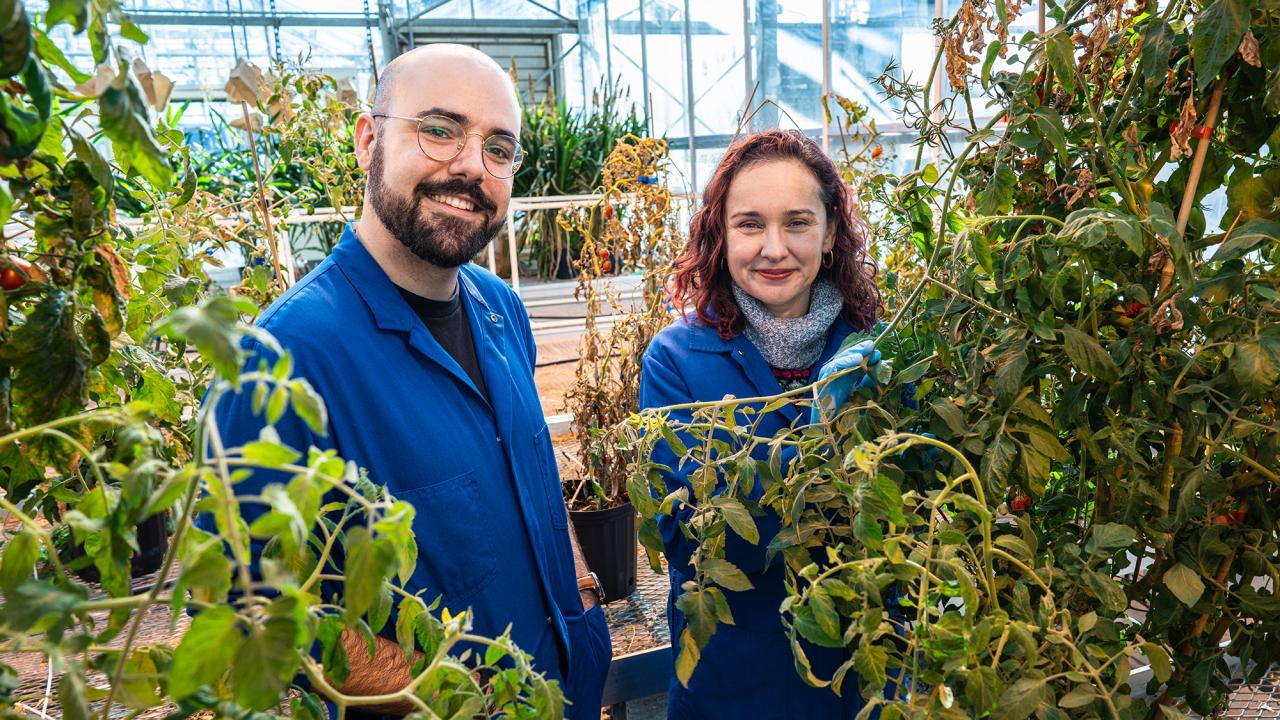
How Tomato Plants Use Their Roots to Ration Water During Drought
When water supplies are low, tomato roots produce suberin—the molecule that gives wine corks and waxy potato skins their water-repellant qualities—to control water flow
Quick Summary
- Alex Cantó-Pastor, a postdoctoral scholar working with Prof. Siobhan Brady, used mutant tomato plants to understand suberin’s role in drought tolerance.
This article originally appeared on the College of Biological Sciences News.
Plants have to be flexible to survive environmental changes, and the adaptive methods they deploy must often be as changeable as the shifts in climate and conditions to which they adapt. To cope with drought, plant roots produce a water-repellent polymer called suberin that blocks water from flowing up towards the leaves, where it would quickly evaporate. Without suberin, the resulting water loss would be like leaving the tap running.
In some plants, suberin is produced by endodermal cells that line the vessels inside the roots. But in others, like tomatoes, suberin is produced in exodermal cells that sit just below the skin of the root.
The role of exodermal suberin has long been unknown, but a new study by researchers at the University of California, Davis, published Jan. 2 in Nature Plants shows that it serves the same function as endodermal suberin and that without it, tomato plants are less able to cope with water stress. This information could help scientists design drought-resistant crops.
“This adds exodermal suberin to our toolbox of ways to help plants survive for longer and cope with drought,” said Siobhan Brady, professor in the Department of Plant Biology and Genome Center and senior author. “It’s almost like a jigsaw puzzle—if you can figure out which cells have modifications that protect the plant during difficult environmental conditions, you can ask questions like, if you build those defenses up one upon the other, does it make the plant stronger?”
In the new study, postdoctoral scholar Alex Cantó-Pastor worked with Brady and an international team of collaborators to uncover the role of exodermal suberin and map the genetic pathways that regulate its production.
Read the full article here.

